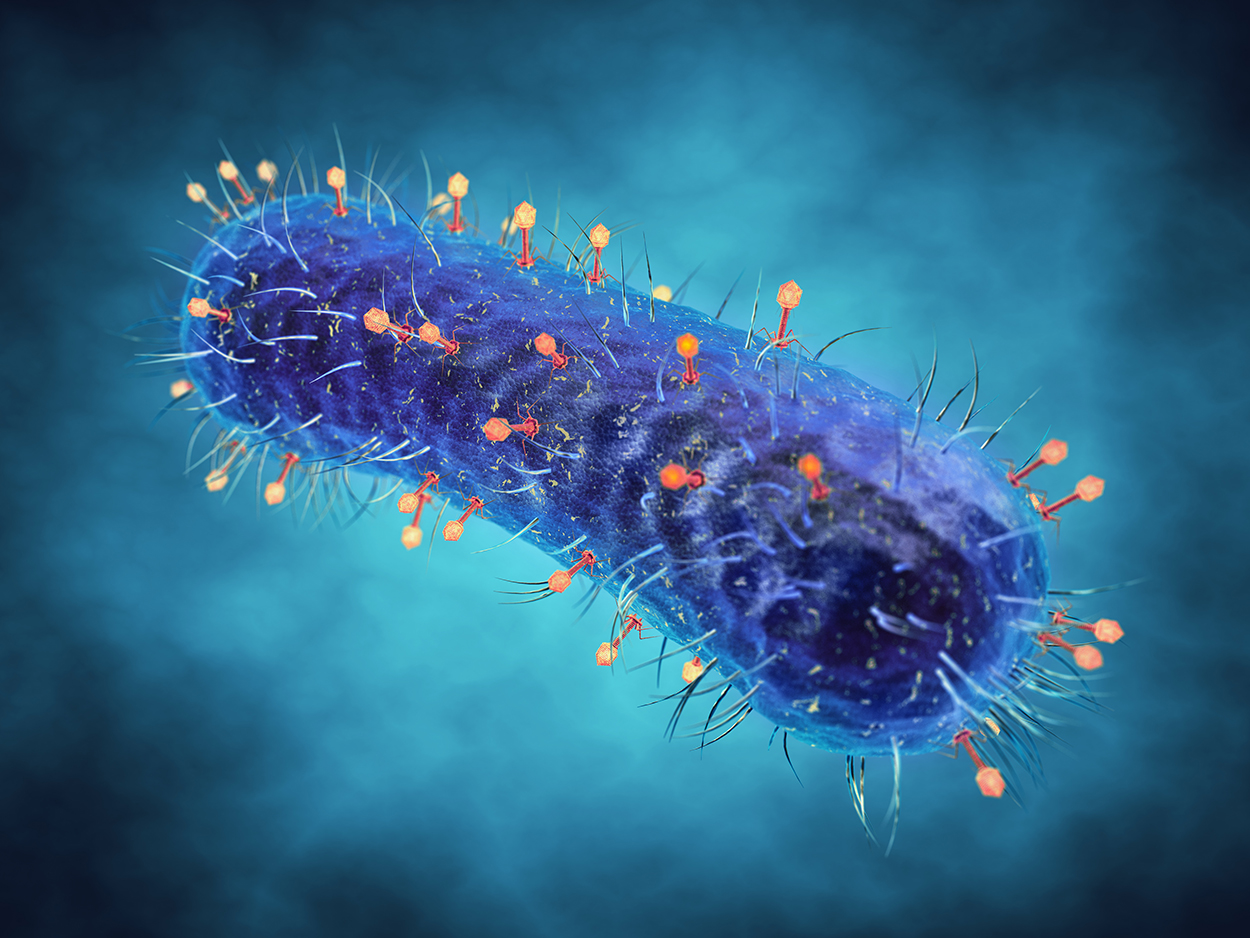BLOG | Bluephage
Want to know more about coliphages?

Every week we will answer questions to unveil information about coliphages. If you have any queries about these viral and faecal water contamination indicators, don’t hesitate to share them with us!
Bacteriophages are viruses that infect bacteria and, therefore, are innocuous (non-virulent) for the human species. That is why their use as microbial indicators is of additional interest due to their harmlessness to analysts.
Coliphages (bacteriophages that infect enterobacteria, mainly Escherichia coli but not exclusively) have been confirmed and consolidated by national and international sanitary agencies as the most suitable viral indicators for the control of water and the processes of potabilization, treatment, and reuse of water, sludge, and biosolids.
The possible use of bacteriophages as better virological indicators of water quality has received progressively more interest, and they are already considered necessary parameters in water management.
The new European Drinking Water Directive says that somatic coliphages should be used to assess different processes quickly and easily. So if we have a risk analysis, it is preventive during water production. It is an a priori evaluation to assess whether the processes are working to ensure the final water quality.
Question 1.
Are viruses, in general, less resistant to treatment than bacteria?
No. Coliphages tend to persist in the environment longer than bacteria and are moderately resistant to natural and anthropogenic stressors, likewise to human viruses.
Question 2.
Do coliphages behave similarly to human viruses concerning environmental persistence and water treatment resistance?
Yes. There is a broad consensus in the scientific community on both aspects.
Question 3.
Is the surface adsorption to particles or membranes of coliphages similar to that of human viruses?
Viruses- including bacteriophages- in natural conditions and environments tend to adsorb to solid particle surfaces. The efficiency of adsorption varies among viruses and bacteriophages and is influenced by certain properties of solids and water, such as pH, ionic force, dissolved salts, and organic matter content. Because the absorption characteristics of bacteriophages on different surfaces are similar to those of human or animal viruses, they are a more effective indicator of this behaviour than traditional bacterial indicators.
Question 4.
Are coliphages present in consistently high concentrations in raw sewage?
Coliphages are a type of virus that infects E. coli bacteria and are commonly used not only as indicators of fecal contamination but also as viral indicators in water and wastewater. These viruses are typically found in the gastrointestinal tracts of humans and animals, making them useful for measuring water quality.
In raw sewage, coliphage concentrations can vary depending on factors such as the fecal contribution to the sewage, occurrence of rain, and the time of day of sampling. However, coliphages are generally present in consistently high concentrations in raw sewage.
Research studies have documented somatic coliphage concentrations in raw sewage ranging from 5×10^5 to 10^7 plaque-forming units (PFU) per 100 mL, and F-specific coliphages from 10^5 to 10^6 PFU per 100 mL. While the concentration can fluctuate depending on various factors, the relative proportions of coliphages to bacterial indicators generally remain consistent. Interestingly, the concentration of coliphages in a given sewage collection site does not exhibit seasonal patterns, nor do their relative concentrations display geographical differences. This suggests that coliphages could serve as reliable indicators of fecal contamination in different regions and at different times.
Wastewater treatment processes are designed to effectively remove microbial indicators and pathogens from sewage prior to its discharge into the environment or reuse for other purposes. Both bacterial indicators and coliphages, as viral indicators, are typically removed at similar ranges to pathogens, which generally range from 0.3 to 3.0 log10 units, depending on the wastewater treatment method. Consequently, the ratios between bacterial indicators and coliphage concentrations and between both types of indicators and naturally occurring pathogens in secondary effluents remain consistent with those found in raw sewage. In secondary effluents, the most observed somatic coliphage values range from 10^3 to 10^5 plaque-forming units (PFU) per 100 mL. These results demonstrate that coliphages can be effective indicators of the efficacy of wastewater treatment processes and can be utilized to monitor water quality in various settings.
Question 5
An advantage in analyzing coliphages as indicators of viral contamination is their stability at 4°C for 48 h. & at -20°C or -80°C with 10% v/v glycerol for months. True or False?
Coliphages are viruses that infect enteric bacteria (mainly Escherichia coli). They are commonly used as viral indicators and allowing also the detection of fecal contamination in water and food samples. Bacterial indicators, such as E. coli and faecal coliforms, have traditionally been used for water quality monitoring, but coliphages have now been included into microbiological water quality regulations as viral indicators. Coliphages are more resilient than bacterial indicators and share similar behaviour to animal and human viruses in water.
For example, some studies have shown that coliphages may be more resistant to disinfection by chlorine and other chemical treatments than bacterial indicators and may therefore be better suited for monitoring the effectiveness of disinfection processes. Additionally, coliphages have been shown to survive longer than bacterial indicators in aquatic environments, particularly under conditions of low nutrient availability and low temperatures.
However, it is important to note that the resilience of coliphages and bacterial indicators can vary depending on the specific strain of virus or bacteria, as well as the environmental conditions they are exposed to.

